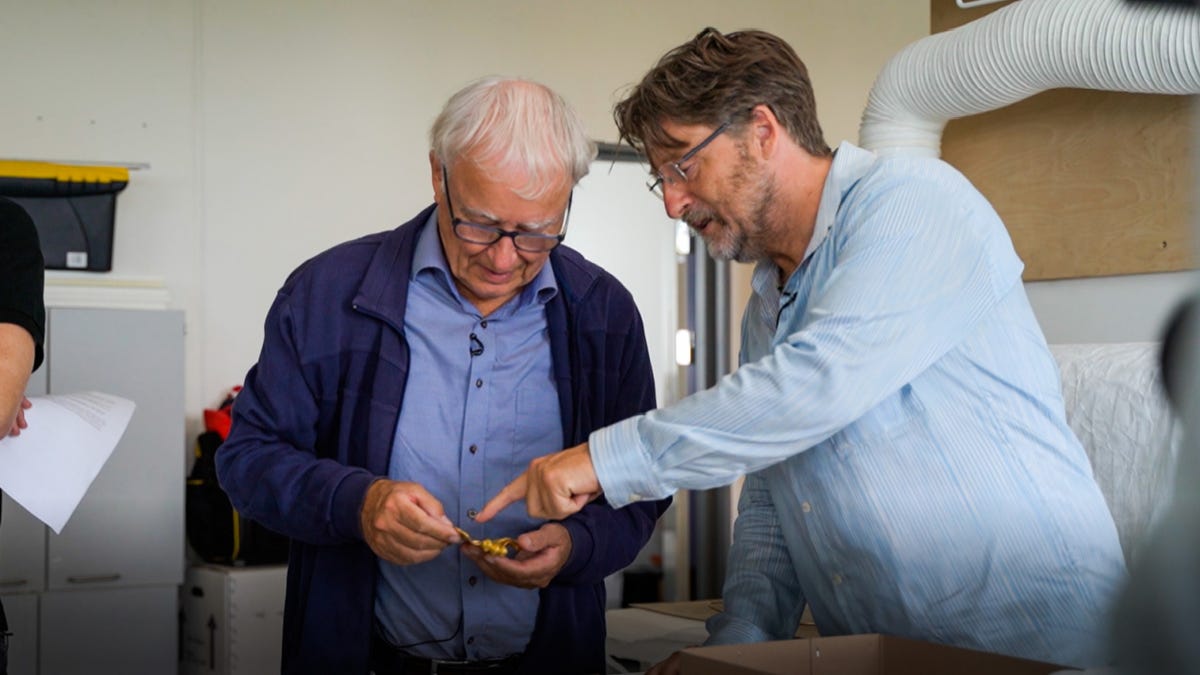Gold rush! First-time metal-detector user uncovers 6th century golden hoard
"I told him he might as well just sell the detector now because he already peaked," a Danish museum employee told the man.

Ole Ginnerup Schytz found the treasure on land belonging to a former classmate.
It's a rookie detectorist's dream. Danish man Ole Ginnerup Schyt had owned his metal detector for only a few hours when he stumbled across one of the largest gold treasures in his country's history. He discovered nearly 1 kg (2.2 pounds) of gold, including some huge medallions the size of saucers, according to a press release from VejleMuseerne, an art museum in southeastern Jutland, Denmark. The museum reports that the treasure had been buried for 1,500 years.
The gold will be on exhibit in 2022 at Denmark's Vejlemuseerne.
Schytz was using his new metal detector on land belonging to a former classmate in Vindelev, Denmark. At first, it wasn't clear what he had found.
"[The first piece found] was full of scratches and covered in mud," he said, according to Insider. "I had no idea, so all I could think of was that it looked like the lid of a can of herring."
The treasure is now known as the Vindelev Hoard. It consists of decorated saucer-sized medallions known as bracteates as well as Roman coins that were turned into jewelry. Some have inscriptions that may refer to the rulers of the time, or to Norse mythology, with one coin possibly referring to the god Odin. One of the Roman coins depicts the Roman emperor Constantine the Great, who ruled from 285-337 AD.
But the rookie detectorist better not get used to such finds. He's unlikely to ever have such a day again.
"I told him he might as well just sell the detector now because he already peaked," Mads Ravn, the museum's head of research, told CNN. "It doesn't get better."
Archaeologists from the museum later excavated the treasure, which they say was buried in a village longhouse by an Iron Age chieftain. The discovery shows that the village was a center of power during the late Iron Age.
"Only a member of the absolute cream of society would have been able to collect a treasure like the one found here," Ravn said in a museum statement. Before the discovery, there was nothing to indicate that such a wealthy warlord or chieftain lived in the village.
Numerous decorated medallions, called bracteates, were found.
It's not clear why the chieftain buried the treasure, though the museum suggests it may have been to protect it from enemies or to appease the gods.
The Vindelev Hoard will be displayed as part of Vejlemuseerne's large Viking exhibition, which opens on Feb, 3, 2022.

